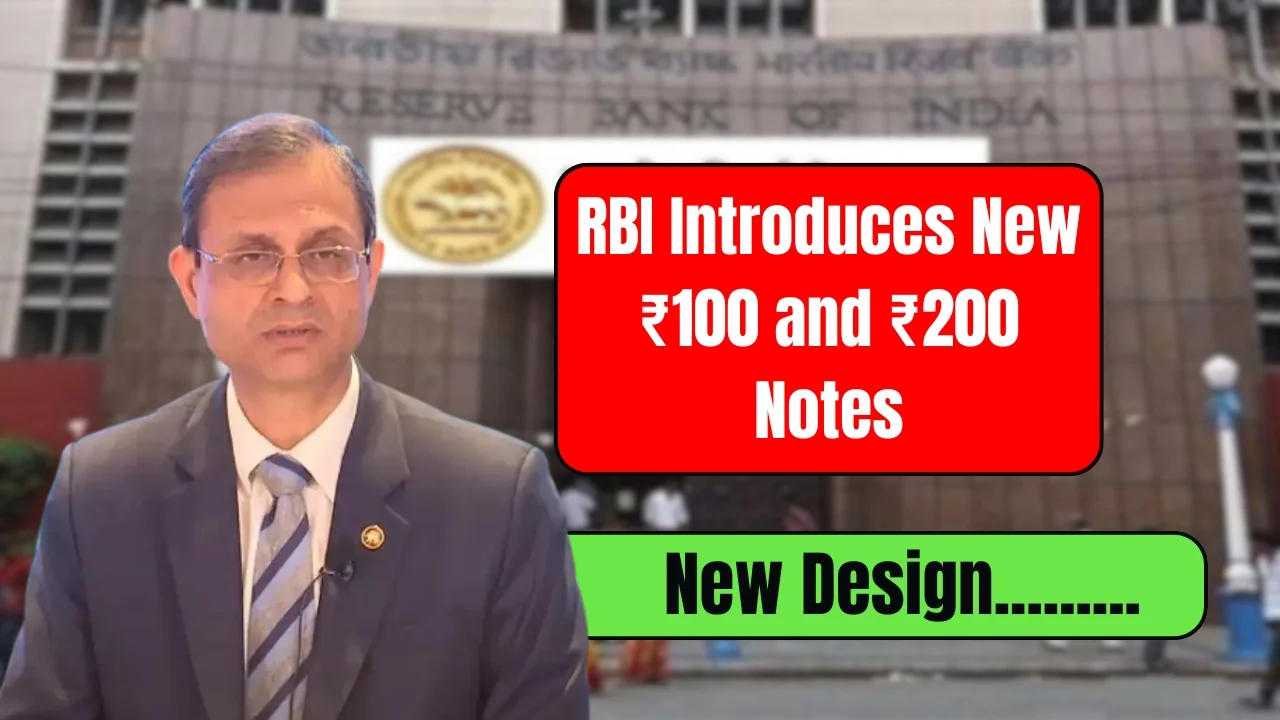The RBI has officially announced the introduction of new ₹100 and ₹200 banknotes as part of its routine currency update. These new notes bear the signature of the newly appointed RBI Governor, Shri Sanjay Malhotra, who took charge as the 26th Governor in December 2024.
While the design, size, and security features remain unchanged, the updated notes are a part of standard practice following a change in the central bank’s leadership.
No Changes in Design or Features
The new ₹100 and ₹200 notes belong to the existing Mahatma Gandhi (New) Series. They carry the same look and feel as the earlier versions. The ₹100 note will continue to feature the “Rani ki Vav” motif and maintain its lavender color. The ₹200 note retains the “Sanchi Stupa” design and bright yellow shade.
The dimensions are also unchanged—₹100 notes measure 66 mm x 142 mm, while ₹200 notes are sized at 66 mm x 146 mm. These notes will continue to include features like raised printing and security threads to ensure easy identification and safety against counterfeiting.
All Existing Notes Remain Valid
According to the RBI, this move does not affect the legal status of the older ₹100 and ₹200 notes. All previously issued notes of these denominations remain legal tender. Citizens are not required to exchange their old notes for the new ones.
The new notes will gradually be introduced into circulation through banks and ATMs. This ensures a smooth transition and avoids any confusion for the general public.
A Routine Update Post Governor Appointment
It is a long-standing tradition for the RBI to release updated currency notes bearing the signature of the current Governor. This is a procedural step and not linked to any major change in currency policy.
The core purpose of this move is to align the currency with the signature of the new RBI Governor. In this case, Sanjay Malhotra’s signature marks the official update, without any modifications to the note’s existing features.
Comparing the Old and New Series
The earlier versions of ₹100 and ₹200 notes under the Mahatma Gandhi Series were significantly different. Older ₹100 notes were blue-green and lacked the cultural motif that is now present in the new design. Similarly, older ₹200 notes featured a yellow-orange color without the now prominent “Sanchi Stupa” motif.
The updated Mahatma Gandhi (New) Series introduced in previous years came with enhanced security elements such as UV features, color-shifting threads, micro-lettering, and better accessibility with raised markings for the visually impaired.
What Citizens Should Know
There is no need for people to rush to banks to get the new notes. Since the older versions are still valid, transactions can continue as usual. Merchants, businesses, and consumers are advised to familiarize themselves with the new signature, but they won’t notice any visible difference in the design.
The RBI has assured that this is a standard update and part of regular currency management. The rollout of these notes is not linked to any demonetization or change in circulation policy.
RBI’s Ongoing Currency Management
The RBI continues to manage India’s currency system with periodic updates to ensure smooth functionality and trust in physical currency. By issuing new notes with updated signatures, the RBI ensures uniformity and transparency across the monetary framework.
As more of these new notes make their way into circulation in the coming months, the public is encouraged to accept them as they would any other valid note. The update, while routine, reflects the continued efforts of the RBI to maintain an efficient and consistent banking system.
In conclusion, the new ₹100 and ₹200 notes mark the beginning of Sanjay Malhotra’s term as RBI Governor. But for the average citizen, this update is a quiet one—business as usual, with no disruptions or changes in currency usage.
